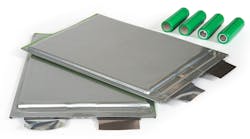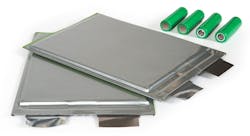Over the years, serious concerns have emerged about lithium-ion cell safety. There have been factory fires, mobile phones and laptop computers bursting into flames, and even the grounding of a 787 aircraft. So, when forming or charging Li-ion cells in manufacturing or during characterization in R&D, special attention must be paid to prevent dangerous conditions that can lead to those cell fires.
One key area of concern is applying overvoltage or overcharging during charging. If the charging voltage is increased beyond the recommended upper cell voltage or if the cell is overcharged, lithium ions can build up on the anode as metallic lithium, which is called lithium plating. The plating can occur as dendrites inside the cell, which could ultimately result in a short circuit between the electrodes. The short circuit can increase the internal cell temperature, which may lead to thermal runaway that results in damaged cells and possibly fire.
When developing a proper setup for cell charging or cell test, the electronics are connected to the cells via some form of contact or probe. For cells in a hard case, like a cylindrical or prismatic, the charger’s contacts are typically a pin-type probe. For pouch cells, where the cell uses tabs as electrical terminals, the charger’s contacts are usually some form of grabber or clips (Fig. 1).
1. Cylindrical cells (upper right) have a hard case, permitting use of pins for electrical contact to the cell during test. Pouch cells (left) have metal tabs, requiring clips or grippers to make electrical contact during test.
To maintain the highest voltage-regulation accuracy and control when large current is flowing into/out of the cell, it’s best to use a four-wire system called remote sensing. By remote sensing, the cell-charging electronics can adjust output voltage to compensate for the voltage drop in the power leads, even as the current changes.

